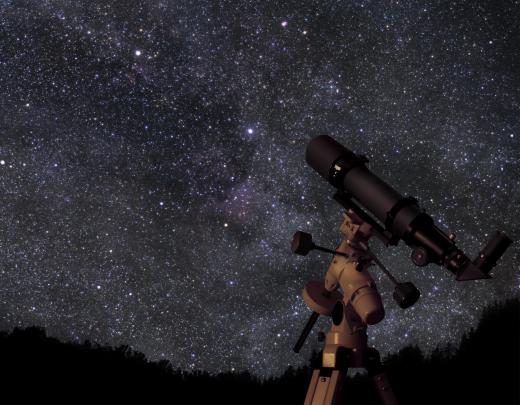What is a Clock Drive?
A clock drive is used in astronomy, particularly for astrophotography. It is a piece of equipment that is attached to a telescope mount. Using a clock drive with a telescope ensures that the field of view remains the same at all times, or that the telescope moves at the same rate as the Earth so that it tracks what is being viewed.
Due to the Earth’s rotation, objects appear to move across the sky over time. Prior to the invention of clock drives, astronomers would have to manually move their telescopes to compensate for the movement of the Earth. Clock drives have allowed for this to become an automatic movement so astronomers can focus on what they are viewing without having to move and refocus their telescopes.

A clock drive is designed to rotate the telescope to which it is mounted at a speed of one rotation per sidereal day. A sidereal day is the time that it takes for the Earth to complete a full rotation compared to the vernal equinox, or the spring equinox that the Sun passes in March. Each sidereal day is about four minutes shorter than a solar day, or a day measured based on the Earth’s rotation around the sun. Sidereal time is used by astronomers to know where to point their telescopes in order to view a particular star on any given night.

Original clock drives were often driven through the use of falling weights and a pendulum, similar to what is seen in grandfather clocks. The current clock drives are now powered electrically through the use of a right ascension motor. In most cases, the clock drive is attached to a bracket on the telescope mount. The motor is then attached to the slow-motion drive shaft, either directly or through a system of gears. Attaching the clock drive to the telescope mount means that the mount is moved and not the telescope, which that the focus and angle of the telescope is maintained at all times and it is just rotated around an axis.
A clock drive can be an integral piece of equipment for astrophotographers. The constant slow movement of the clock drive ensures that the telescope smoothly tracks the star of choice. This in turn allows for photographs to be taken at different intervals as the star is seen to move across the sky. By attaching a clock drive and camera directly to the telescope, the amount of handling by the photographer is greatly reduced once the telescope is initially set up. This means that there is less chance of human error when taking photographs over a long amount of time.
AS FEATURED ON:
AS FEATURED ON:












Discuss this Article
Post your comments